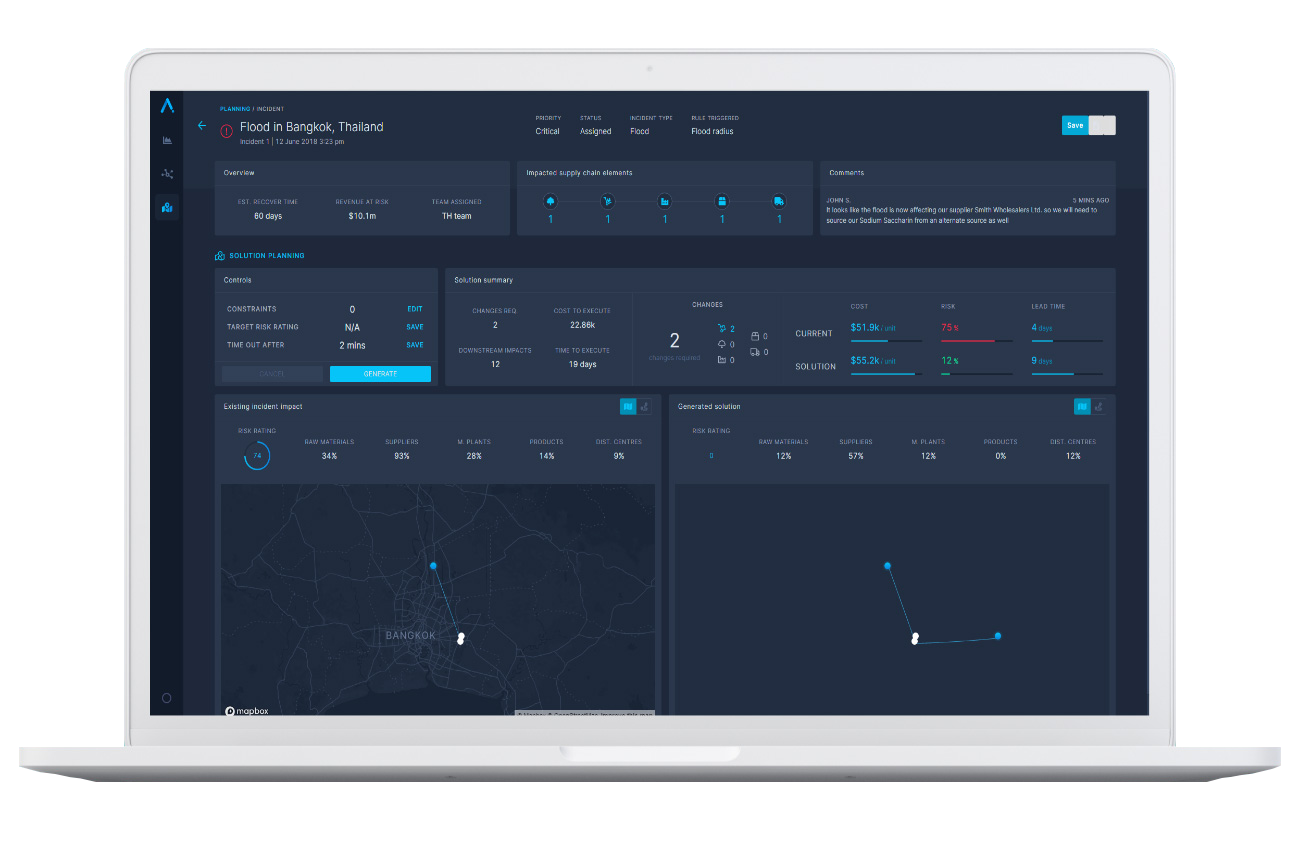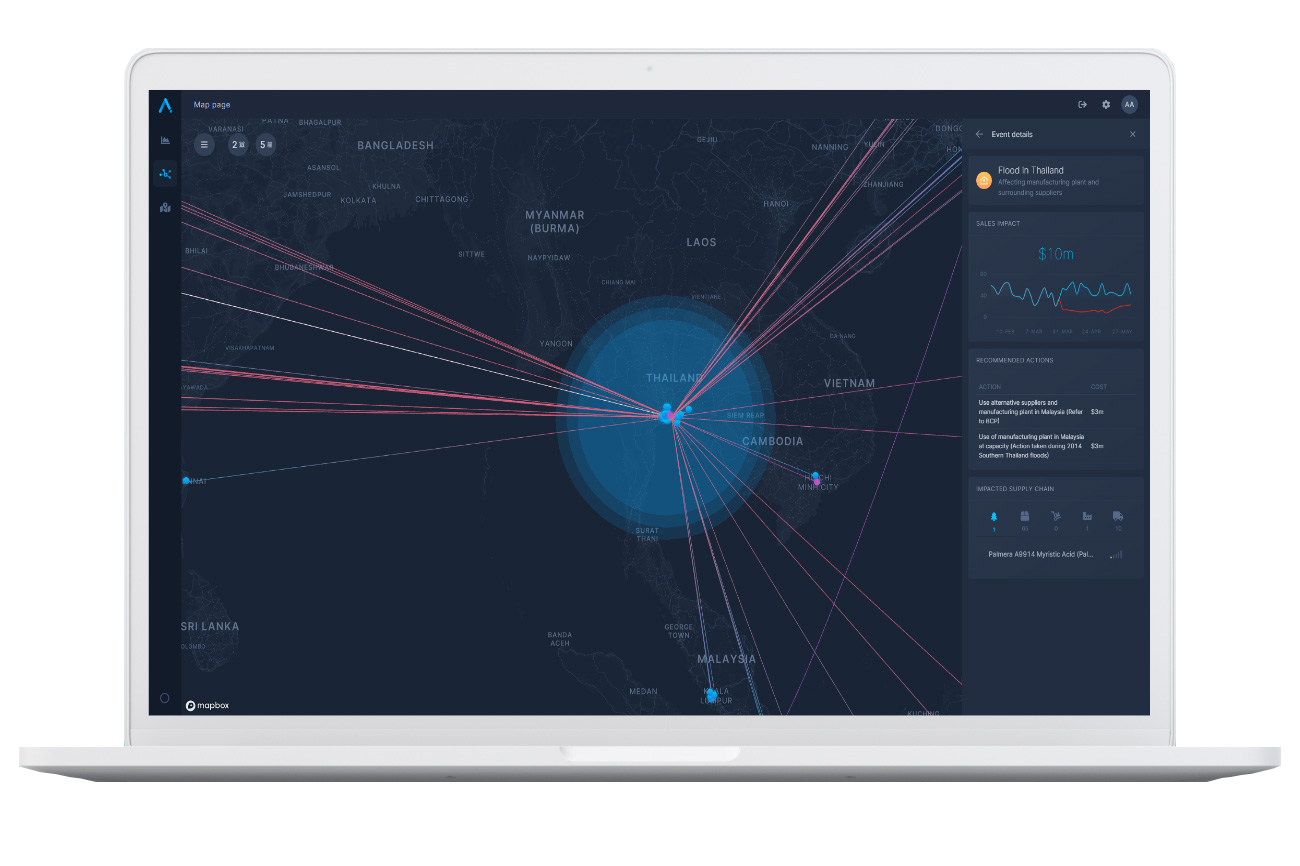From global pandemics to geopolitical turmoil, leaders in logistics, procurement and operations are facing increasing difficulty with safeguarding their organisations against supply chain vulnerabilities.
KPMG Supply Chain Predictor provides you with end-to-end, real time oversight of your entire supply chain, while utilising predictive analytics and artificial intelligence to identify potential disruptions before they occur. By combining internal and external data points, our AI-enabled modelling engine greatly reduces risk by helping you proactively respond to supply and demand variability.
Key benefits
Benefits of KPMG Supply Chain Predictor
How it works
Supply Chain Predictor allows you to spot future supply and demand disturbances, and recommends mitigation activities based on financial impact and risk avoidance scenarios.

AI-capability that enables better supply and demand planning by developing a range of alternative network scenarios.

Unlike other solutions in the market that use historical data, Supply Chain Predictor is future-focussed and is based on external real-time data and analytics.

Real-time data sensing enables you to swiftly visualise and respond to potential risks and disruptions.
Case study: Ambulance Victoria
From FMCG to the utilities sector, Supply Chain Predictor helps businesses operating across all industries faced with complex supply chain issues.
Ambulance Victoria provides emergency medical response to an area of more than 227,000 square kilometres – larger than Great Britain. Their main challenges are to ensure that an ambulance is available at any location within 15 minutes, that the right team and equipment are deployed for a specific accident, and that patients are taken to the nearest appropriately equipped hospital.
Supply Chain Predictor helps Ambulance Victoria attain vital insights into meeting critical response times, and directing patients to the right medical facilities based on clinical need, patient demographic, hospital services and wait time. Combining a wide array of crucial data feeds, the solution allows Ambulance Victoria to predict demand and asset placement necessary by geography, and make better informed in-field decisions based on real-time data and predictions.

Request a demo
To learn how Supply Chain Predictor can provide you with extended supply chain visibility, leave your details below and a member of our team will be in touch.
